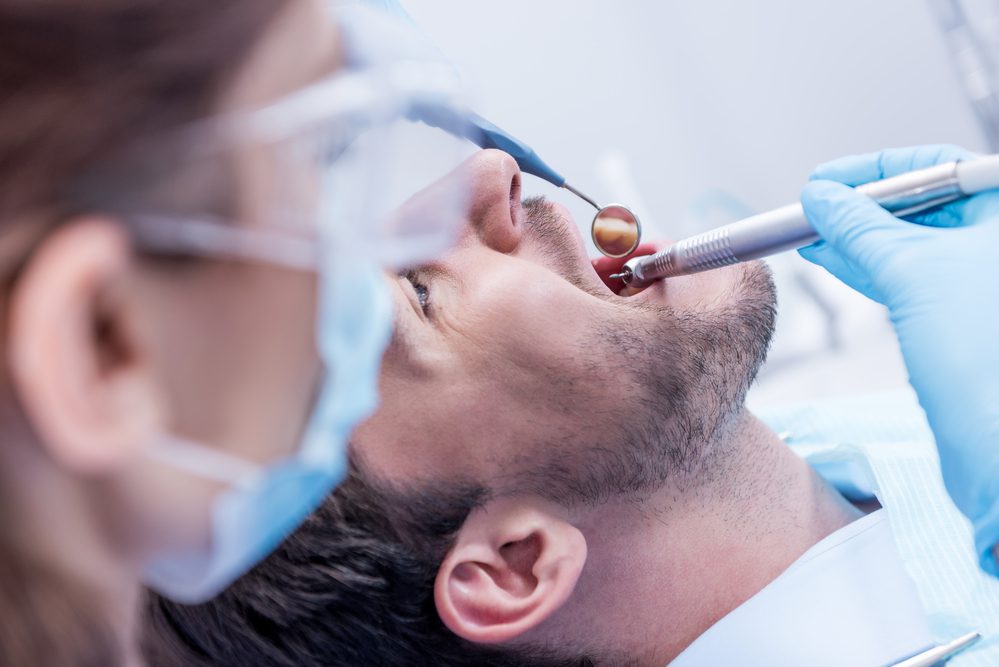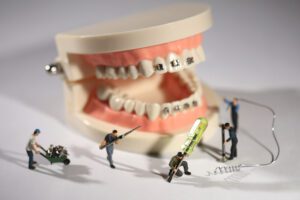Posted on April 14, 2023

Have you ever felt apprehensive about visiting the dentist because you don’t understand the procedures being performed? Do you find yourself Googling every dental term mentioned during your appointment?
Taking care of your dental health is crucial. However, understanding the various treatments and procedures can be overwhelming and confusing.
In this article, we will break down common dental procedures and treatments to help you better understand what’s happening in your mouth. We will explain what each procedure entails, how they’re done, and what to expect during and after the treatment. So, the next time you visit your dentist, you can feel more confident and informed about your treatment.
Regular teeth cleanings are an essential part of maintaining oral health. During the cleaning, a dental hygienist or dentist will remove plaque and tartar buildup from the teeth and gums.
This process helps prevent cavities, gum disease, and other oral health issues. The cleaning may also include polishing the teeth to remove surface stains and fluoride treatment to strengthen the enamel.
It is recommended to have teeth cleaned every six months to keep your mouth healthy and prevent dental problems from developing.
Teeth whitening is a popular dental treatment that helps to remove stains and discoloration from teeth, making them look brighter and more attractive. This procedure usually involves applying a bleaching agent to the teeth for a certain amount of time. While it’s typically performed in a dental office, there are also at-home teeth whitening kits available.
By improving the appearance of your teeth, teeth whitening can boost your self-confidence and make you feel more comfortable with your smile. It’s important to keep in mind that there are different types of teeth whitening procedures available, and it’s best to consult with a dental professional to determine which option is right for you.
Tooth extractions are one of the most common dental procedures performed by dentists. An extraction may be necessary for a variety of reasons such as decay or infection, overcrowding, or to prepare for braces or dentures.
The dentist will numb the area with a local anesthetic before carefully removing the tooth. After the extraction, the patient will need to follow the dentist’s instructions for proper care and healing, which may include rest and avoiding certain foods for a few days.
Veneers are a popular cosmetic dental treatment that can significantly improve the appearance of your teeth. These thin shells, made of either composite or dental porcelain, are placed over your natural teeth to address issues such as discoloration, chips, and gaps.
To determine if veneers are the right option for you, it’s important to have a consultation with your dentist. This will help you understand the process, the cost, and any risks associated with the procedure. The process itself is typically straightforward and involves minimal discomfort.
The placement of veneers generally requires two appointments. During the first appointment, the dentist will prepare your teeth by removing a small amount of tooth enamel and taking a mold of your teeth. The custom-made veneers are then fabricated in a lab before being bonded to your teeth during the second appointment.
With proper care, veneers can last up to 10-15 years. This makes them a long-term solution for those looking to improve the appearance of their smile.
Dental procedures can be intimidating for many people, but understanding what they entail can help alleviate some of that anxiety. One common dental procedure is fillings and repairs. These procedures are used to treat cavities, chipped or broken teeth, and tooth decay.
During a filling, the dentist will remove the decayed part of the tooth and fill it with a material such as composite resin or amalgam.
Bonding is a dental procedure that involves the use of a tooth-colored composite resin material to repair or improve the appearance of teeth that are cracked, chipped, or stained.
The process involves preparing the tooth surface by lightly etching it with a mild acidic solution, then applying the resin material to the surface and shaping it to match the natural contours of the tooth.
The resin is then cured with a special light, which hardens the material and bonds it tightly to the tooth. Bonding is a simple, effective way to improve the appearance of teeth and can often be completed in a single visit to the dentist.

Dentures are removable dental appliances used to replace missing teeth and surrounding tissue. There are two main types of dentures: complete and partial. Complete dentures are used when all teeth are missing, while partial dentures are used when some natural teeth remain.
Getting dentures require several appointments with your dentist to ensure a proper fit and function. Dentures need to be cleaned regularly and adjusted periodically to maintain fit and comfort.
Oral and Maxillofacial Procedures refer to specific dental surgeries and treatments that both diagnose and treat conditions of the mouth, jaw, and face. These procedures are typically performed by an Oral and Maxillofacial Surgeon who specializes in this area of dentistry.
Examples of common Oral and Maxillofacial Procedures include wisdom tooth extraction, jaw realignment, and corrective jaw surgery.
Periodontal treatment refers to any procedure that aims to treat and prevent periodontal disease, which affects the gum tissues and bone that surround and support teeth.
The most common procedure is scaling and root planing, which involves removing plaque and tartar buildup around teeth and smoothing the exposed tooth root.
Other treatments may include gum grafting or flap surgery to repair damaged gums or bone grafting to restore bone loss.
Laser dental procedures are becoming increasingly popular due to their precision and minimally invasive nature. In laser procedures, a high-energy beam of light is used instead of traditional dental instruments to remove or reshape the tissue.
These procedures are often used for soft tissue treatments such as gum reshaping, removing tumors, and treating infections. Laser procedures can result in less bleeding, swelling, and discomfort compared to traditional methods.
However, not all dental concerns can be treated with lasers, and it is important to consult with a dentist to determine whether laser procedures are the best option for your specific dental needs.
Understanding the different types of dental procedures available can help you make informed decisions about your oral health. From cleanings and fillings to more complex treatments, there are a variety of options to address any dental issues you may be experiencing.
By working closely with your dentist and understanding the procedures they recommend, you can feel confident in your dental care and take proactive steps to maintain a healthy, beautiful smile.
At Smilebliss, our team of dental professionals is committed to providing top-quality care and personalized treatment plans tailored to each patient’s unique needs. Contact us today to schedule a consultation and take the first step towards a healthier, happier smile.